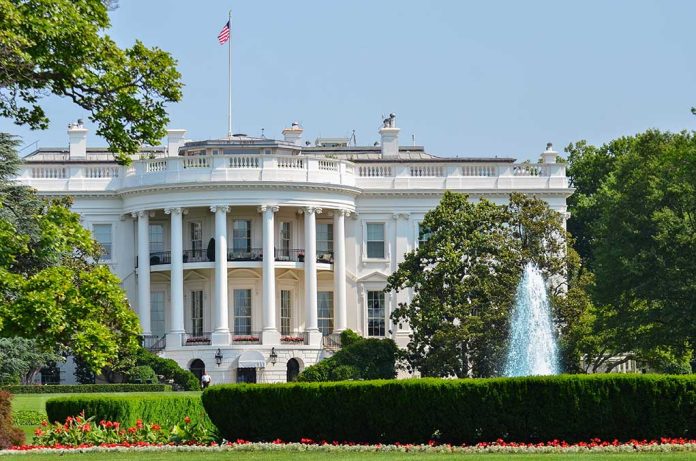
Donald Trump’s response to a media controversy involving Pete Hegseth raises questions about the integrity of media narratives and the line between public interest and privacy.
Key Takeaways
- President Trump supports Pete Hegseth despite the Signal chat controversy.
- The New York Times alleges Hegseth shared military plans in Signal chats.
- Trump dismisses media concerns, calling the incident a “waste of time.”
- There are criticisms about the media using former employees as sources against Hegseth.
Trump’s Support for Hegseth Amidst Signal Chat Controversy
The media storm involving Pete Hegseth centers around accusations of his participation in controversial Signal communications. President Donald Trump has openly supported Hegseth, the Secretary of Defense, during this tumultuous period. According to reports, Hegseth set up a Signal chat group named “Defense | Team Huddle,” which included discussions with his inner circle, some of whom were not from the Pentagon. This group chat was allegedly formed before Hegseth’s official appointment, adding to the intrigue of the situation.
This raised questions about the propriety and security of such communications. The New York Times suggested that Hegseth had shared sensitive military attack plans in these exchanges, with the chat group also comprising his family members and personal lawyer. Notably, despite the growing media coverage, Trump labeled the incident a “waste of time” and reiterated his full confidence in Hegseth, highlighting his effective performance in Yemen.
In addition to blaming the press and former employees for the latest Signal controversy, Hegseth said he has spoken to Trump.
“We are going to continue fighting. On the same page all the way,” he says. https://t.co/xQcABHe1rK
— Connor O'Brien (@connorobrienNH) April 21, 2025
Media vs. Administration: Diverging Narratives
The media narrative, primarily driven by sources such as The New York Times, has focused on potential breaches of protocol and classified information sharing. Hegseth, however, dismissed these reports as attempts by disgruntled former employees to tarnish his reputation. Sean Parnell, Chief Pentagon Spokesman, strongly criticized the media, arguing that no classified information was compromised and that leveraging the accounts from ex-employees was both misleading and malicious.
“What a big surprise that a few leakers get fired and suddenly a bunch of hit pieces come out from the same media that peddled the Russia hoax,” remarked Hegseth. The White House firmly stands behind Hegseth, denouncing the narrative of chaos and disarray painted by media outlets. This aligns with Trump’s recent trend of supporting his top officials despite controversies, contrasting with his first administration’s reputation for rapid dismissals.
Evaluating Media’s Role: Between Public Accountability and Intrusiveness
This incident highlights the complex dynamics between the media, public officials, and audience perceptions. Trump’s argument leans heavily against what he perceives as media overreach, raising valid concerns about privacy and the implications of speculative reporting. While media scrutiny is vital in holding power to account, it is crucial to evaluate the integrity and intentions behind the coverage.
Looking forward, this situation serves as a case study in understanding the challenges public figures face amidst rapid information dissemination. The delicate balance between public interest and personal privacy, especially in high-stakes environments like the Pentagon, will likely continue to provoke debate across the political spectrum.
Sources:
Trump ‘stands strongly behind’ Hegseth after new Signal report: White House
Trump Makes Critical Decision After Hegseth Allegedly Caught in Second Signal Chat Disaster
Trump Calls Concern Over Hegseth’s 2nd Signal Chat Episode ‘Waste of Time’



